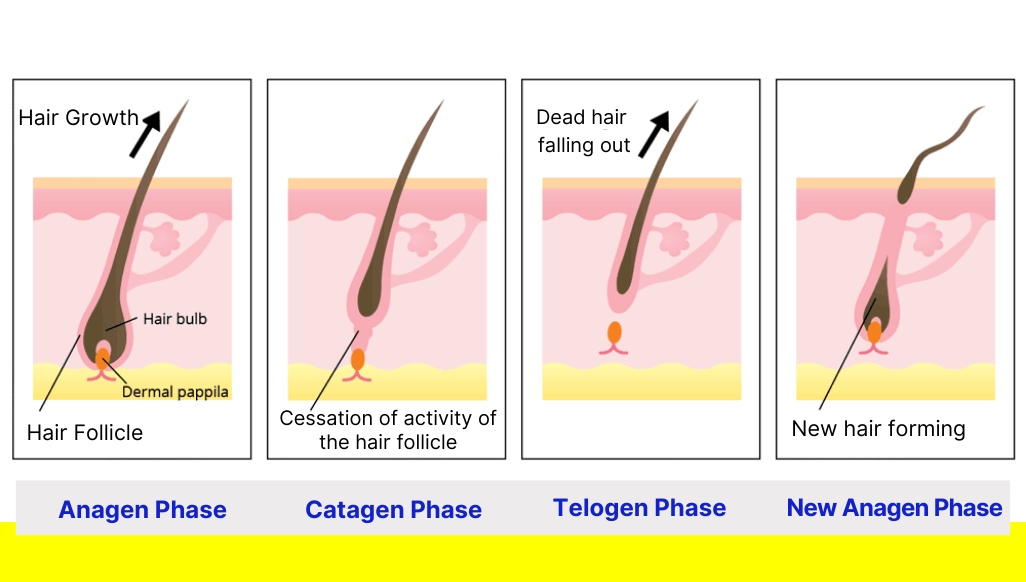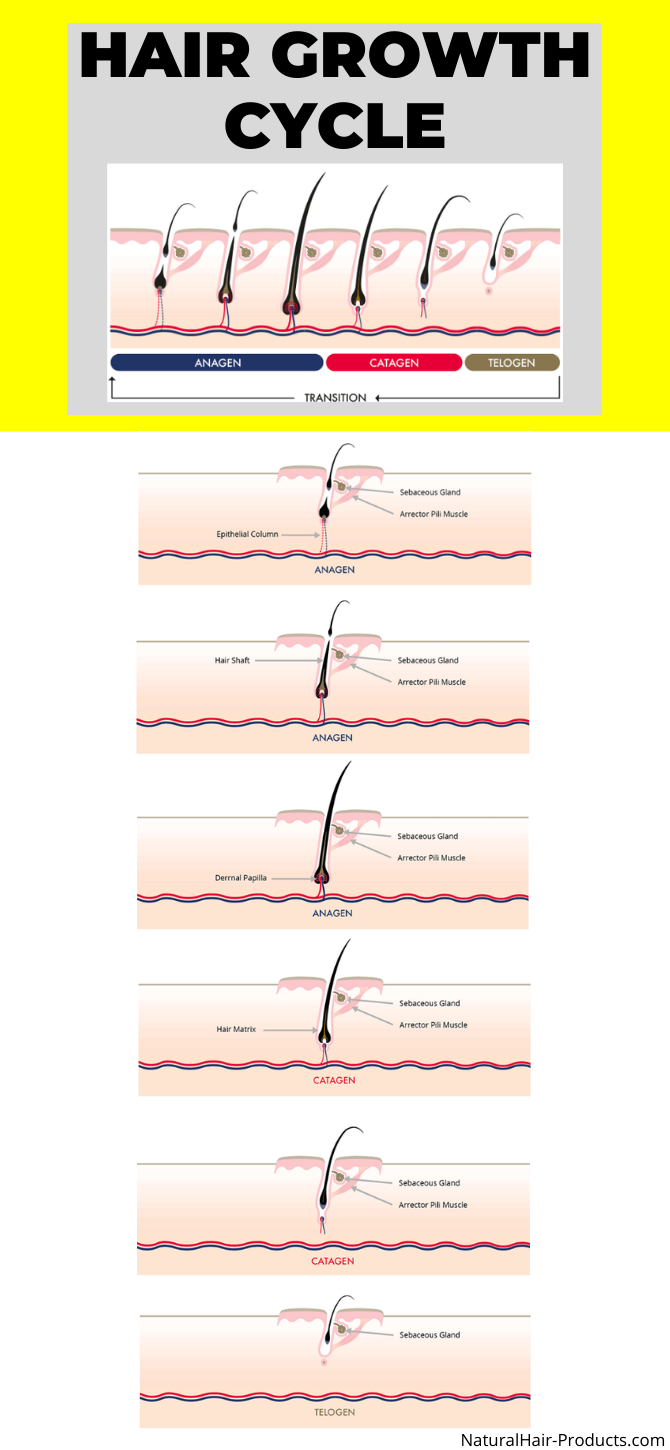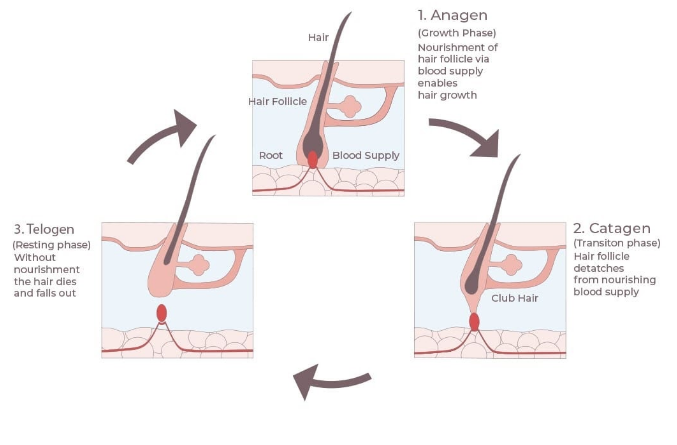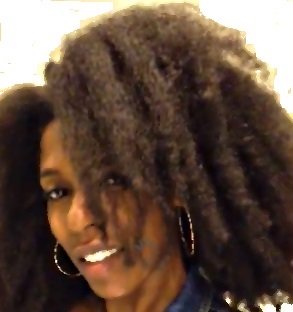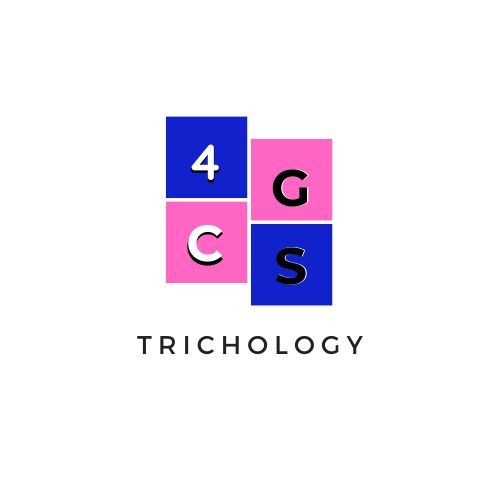The Hair Growth Cycle
- How Does It WORK?
- NHP
- Hair Growth 101
- How to Make Hair Grow Faster
- Hair Growth Cycle
The HAIR GROWTH CYCLE seems complicated to many people, that’s the bad news.
The good news is that it’s really not difficult to understand when you get a clear explanation.
So before you start doing hair growth methods like the inversion method, let's first get you an education on the mechanics of your hair and scalp cycles.
That’s what you’ll get right now.
Once you better understand the cycle of hair growth you’ll be equipped with knowledge that most people simply don’t have.
So let’s get into it, shall we?
The 3 Hair Growth Cycle Phases
People often wonder how to make hair grow faster without considering the fact that there are 3 stages of hair growth in the cycle.
Starting with the actively beginning growth from the root to the phase where your hair naturally sheds. These 3 stages are known as the Anagen phase, Catagen phase and Telogen phase. Let’s discuss each phase and its purpose one-by-one.
The Anagen Phase of Hair Growth Cycle
The Anagen phase is the period of growth. The cells in the hair bulb divide rapidly creating new hair growth. When we talk about the anagen hair growth phase, we are talking about the strands on an individual basis.
For example, a full head of hair will ALWAYS have hair that actively grows from the roots for an average of 2-7 years before hair follicles become dormant.
In this time, hair can grow anywhere between 18-30 inches depending on various internal and external factors.
The length of this active hair growth phase is dependent on your maximum hair length limitations, which varies between people due to health, genetics, age, hair care practices and many more factors.
The Catagen Phase of Hair Growth Cycle
The second phase of your hair growth cycle is Catagen. This period is short, lasting only 14-21 days on average.
In this transitional catagenic phase, hair stops growing and detaches itself from the blood supply and is then named a club hair.
The Telogen Phase of Hair Growth Cycle
Finally, hair enters its 3rd and final stage called the Telogen phase. This phase begins with a resting period, where club hairs rest in the root while new hair begins to grow beneath it. This hair growth cycle phase lasts for around 90 days.
After this time, the resting club hairs will fall out to allow the new hair strand to come through the hair follicle.
So for people who want to know what is the reason for normal daily hair loss, the telogen phase is your answer. This is nothing to be alarmed about and is a natural process that should go completely unnoticed.
Some have wonder if the inversion method works to stop this part of the hair growth cycle, unfortunately it doesn't.
Each follicle is independent and goes through the growth cycle at different times so you don’t lose patches of hair all at once and only shed 50-100 hairs each day.
Meanwhile, the other 80-90% of your hair strands will be growing in the Anagen phase.
FAQs About The Hair Growth Cycle
Each hair follicle is independent and goes through the growth cycle at different times — otherwise all your hair would fall out at once! Instead, you only shed a certain number of hairs a day – 80 to 100 hairs on a healthy head of hair.
Hair loss, hair thinning and problems with hair growth may occur when your growth cycle is disrupted. This can be triggered by conditions such as metabolic imbalances, illness, mechanical stresses (like traction alopecia) or improper nutrition.
Understanding Hair Follicle Structure
Hair has two distinct structures - first, the follicle itself, which resides in the skin, and second, the shaft (AKA strand), which is what is visible above the scalp.
The hair follicle is a tunnel-like segment of the epidermis that extends down into the dermis. The structure contains several layers that all have separate functions. At the base of the follicle is the papilla, which has tiny blood vessels (called capillaries) that nourish the cells for hair growth.
The living part of the hair is the very bottom part surrounding the papilla, called the bulb. The cells of the bulb divide every 23 to 72 hours, faster than any other cell in the human body.
ANSWER SECTION: About Hair Growth Cycle Phases
So let’s answer some of the most commonly asked questions about the hair growth cycle and its various phases.
CONCLUSION
I hope you enjoyed my guide about the hair growth cycle and its various phases. .
Understanding your hair growth cycle can help you realize that shedding hair is natural and that you always have hair that is growing, even when you don't notice it.
If you want longer hair your focus does not need to be on the phases of hair growth, but instead, the retention of it. That is where you will actually see and enjoy the fruits of your hair growth cycle.
